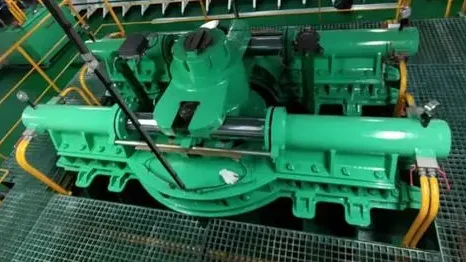The inventory oil mist concentration detector mainly detects oil mist concentration based on optical, electrical, or mechanical principles. The following are several common working principles
1、 Principles of Optics
(1)Principle of Light Scattering
When light passes through air containing oil mist, the oil mist particles scatter the light. The light source in the detector emits light that illuminates the oil mist area. After the oil mist particles scatter the light, it is received by the light receiver in the detector. By measuring the intensity of scattered light, the concentration of oil mist can be calculated. Generally speaking, the higher the concentration of oil mist, the stronger the intensity of scattered light.
For example, in some high-precision oil mist concentration detectors, lasers are used as light sources because lasers have good monochromaticity and directionality, which can more accurately detect the scattered light of small oil mist particles, thereby improving measurement accuracy.
(2)Principle of light absorption
Some oil mist concentration detectors use the absorption characteristics of oil mist towards specific wavelengths of light to measure concentration. The light source emits light of a specific wavelength, and when the light passes through the oil mist, the mist absorbs a portion of the light. The light receiver detects the change in light intensity after passing through the oil mist, and according to the Beer Lambert Law, the concentration of the oil mist can be calculated. Different types of oil mist may have different absorption characteristics for light of different wavelengths, so it is necessary to choose the appropriate light source wavelength.
2、 Principles of Electricity
(1)Capacitive principle
The capacitive oil mist concentration detector works based on the principle that oil mist particles change the capacitance of the capacitor. There is a capacitor inside the detector, and when oil mist enters the space between the capacitor plates, the oil mist particles will change the dielectric constant between the plates, resulting in a change in capacitance value. By measuring the change in capacitance value, the concentration of oil mist can be determined. This type of detector is sensitive to the size and distribution of oil mist particles, and is generally suitable for detecting relatively uniform oil mist environments.
(2)Resistance principle
The resistance type oil mist concentration detector uses the characteristic of oil mist particles adsorbing on the surface of the resistor to change the resistance value to detect concentration. When oil mist particles adhere to the resistance element in the detector, the conductivity of the resistance element changes and the resistance value increases. By measuring the change in resistance value and combining it with pre calibrated data, the oil mist concentration can be calculated. This method is simple, but may be affected by factors such as environmental humidity and requires appropriate compensation.
3、 Mechanical principles
(1)Inertial impact principle
The inertial impact type oil mist concentration detector is designed based on the inertial characteristics of oil mist particles. There is an airflow channel inside the detector. When air containing oil mist passes through the channel at a certain speed, larger oil mist particles will collide with the collection plate inside the channel due to inertia, while smaller particles will continue to flow with the airflow. By measuring the mass or quantity of oil mist particles on the collection plate, the concentration of oil mist can be calculated. This method has a good detection effect on larger particles of oil mist, but the detection accuracy for small particles may be relatively low.
(2)Principle of centrifugal separation
The centrifugal separation oil mist concentration detector uses centrifugal force to separate oil mist particles from the air. The air containing oil mist is introduced into a high-speed rotating centrifugal device, and the oil mist particles are thrown towards the edge and separated from the air under the action of centrifugal force. The concentration of oil mist can be determined by measuring the quality or quantity of separated oil mist particles, or by detecting the cleanliness of the remaining air. This method can effectively handle high concentration oil mist, but the equipment is relatively complex and the cost may be high.
Discover the Best Inventory Oil Mist Detectors: Our Recommendations
Sino-Ocean Marine has newly arrived inventory of oil mist detectors and Oil mist concentration sensor, which are in stock. Customers and friends are welcome to inquire.



